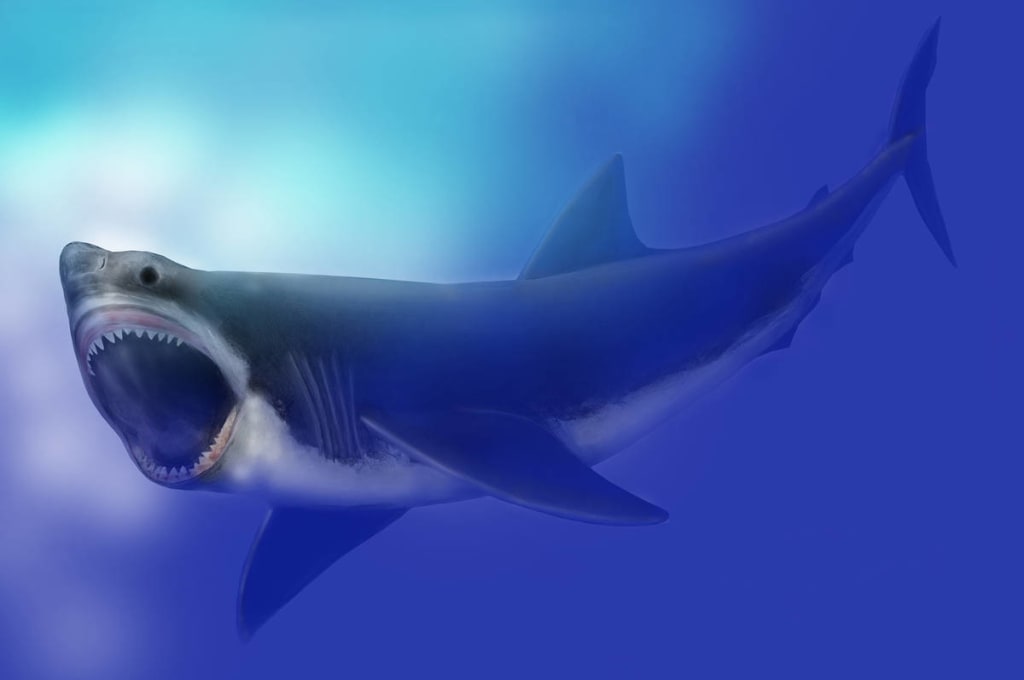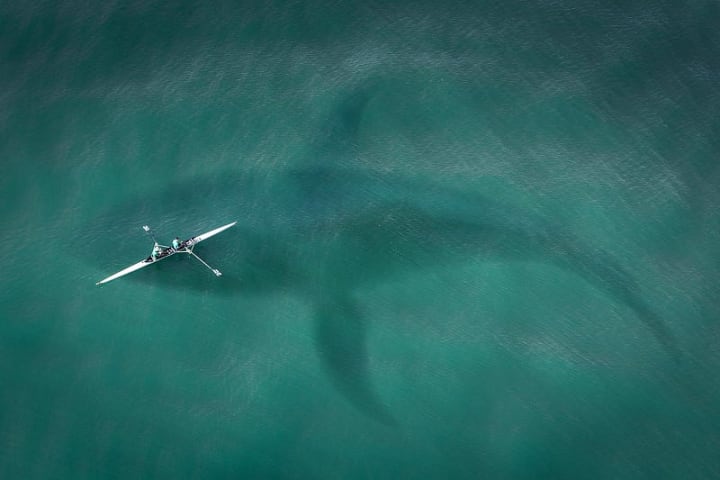Our Love Of Megalodons
The world's most dangerous apex predator and millions are in love with the thing.

First there was Jaws, and we realized we might need a bigger boat. Then came the Megalodons, and we realized we'd need at least a Columbia Class Submarine with as many missiles and torpedos as we could get.
Imagine if you will, the long-believed-extinct Megalodon makes its return to the public eye. Many other extinct creatures have returned. It's not uncommon for the scientific world to find previously thought to be extinct creatures alive and well.
- Coelacanth: The coelacanth was considered extinct for 65 million years.
- Megamouth Shark: Though extinct for millions of years, a healthy specimen was found in 1976.
- Goblin Shark: Thought to be extinct but known for fossilized records of its existence, the first living specimens were discovered in 1898.
- Frilled Shark: Thought extinct until it was rediscovered in the 19th century.
- Oarfish: Once thought extinct or even mythical, they became more well-documented in the mid-20th century.
Extinction can be a mistake. It has come down to a lack of recent sightings or knowledge of a species' existence that makes science believe a species is extinct. But, what if a species isn't extinct? That's the magic of science and the magic of our imagination.

What If Megalodon Returned In The 21st Century
Steve Altens' Meg was a runaway success, climbing to the top of the New York Times Best Sellers List in the 90s. It spawned an opportunity for Alten as he wrote the sequels to his adventure series about the return of Megalodons and the adventures of Jonas Taylor and his family. Many years went by and we were treated to the ridiculousness of Jason Statham fighting a Megalodon in a fun, and exciting, popcorn movie for the summers. As MEG 2: The Trench nears its' August release, can you imagine if one of these beasts did reappear in the modern world?
Some researchers have suggested that the largest sea predator, Megalodon (Carcharocles megalodon), may have exceeded 65 to 80 feet. They are believed to have weighed between 50 and 70 tons. Their size would have been staggering, as would their appetites. There would be significant implications and consequences of a Megalodon appearing.
The sudden appearance of a living Megalodon would be a groundbreaking discovery. Scientists would be eager to study the shark, gather data, and learn more about its biology, behavior, and ecological impact. The latter, it's imagined, would be catastrophic.
Megalodons were apex predators and their presence would disrupt marine ecosystems. There would be a significant impact on the population dynamics of marine life, which would potentially lead to a decline in some species. Disappearances of some marine creatures could cause ripple effects throughout the marine food chain.
Imagine thinking you could go back into the water...

The appearance of a megalodon would raise concerns for industries reliant on marine resources. Fishing, tourism, and coastal activities could be negatively impacted if the presence of this enormous predator posed a threat to human safety. Efforts would be made to mitigate potential risks and assess the economic and environmental implications.
Given the rarity of megalodons and the potential value of preserving a living specimen, conservation efforts would likely be initiated. Protected areas might be established to ensure the safety of the shark and its habitat, allowing scientists and conservationists to study and protect this ancient species.
The appearance of a megalodon would captivate public interest worldwide. It would inspire a renewed fascination with prehistoric creatures and the oceans. Museums, documentaries, and educational programs would focus on disseminating knowledge about the megalodon, its history, and its significance in our understanding of Earth's past.
Conclusions
The return of a creature like Megalodon to a time such as this one would be exponentially bad. The return of multiple creatures like the Megalodon would be catastrophic. Consider what we know, or likely know, about the apex predators.
Their size was likely unmatched by many other prehistoric creatures, and in the ocean, it was unmatched by any known predators. Their diet would have been carnivorous, so they would bring havoc to the ecosystems that help sustain us today. They would be nearly unstoppable.
In oceanography, there are many stories of giant sharks being seen around the world. Shark Week covered these stories for years during many specials. The prevailing theory, even before Steve Alten wrote the books as if the MEG was alive, it was at the bottom of the Marianas trench. Perhaps it's better that they stay there and we don't encounter these beastly creatures.
However, our interest in the Megalodons only grows. A Megalodon tooth can sell for upwards of $7,000, and a new find was reported in Florida a week ago. Again, they can remain in our history and be things that nightmares are made from because if they existed today, few people would go into the ocean again.
About the Creator
Jason Ray Morton
I have always enjoyed writing and exploring new ideas, new beliefs, and the dreams that rattle around inside my head. I have enjoyed the current state of science, human progress, fantasy and existence and write about them when I can.
Enjoyed the story? Support the Creator.
Subscribe for free to receive all their stories in your feed. You could also pledge your support or give them a one-off tip, letting them know you appreciate their work.
Reader insights
Outstanding
Excellent work. Looking forward to reading more!
Top insights
Compelling and original writing
Creative use of language & vocab
Easy to read and follow
Well-structured & engaging content
Expert insights and opinions
Arguments were carefully researched and presented
Eye opening
Niche topic & fresh perspectives
Masterful proofreading
Zero grammar & spelling mistakes
On-point and relevant
Writing reflected the title & theme






Comments (4)
You have to know that someone like Elon Musk would end up hunting it just so he could display it--who knows, perhaps on Mars.
Awesome article!!! Loved it!!!❤️❤️💕
Great article curious to see what a megamouth looks like. Also thanks I’ll be thinking of a Meg the next time I go in the ocean lol
I definitely won’t go in the water if such creature exist. Thank God for the YingYang balance . It would definitely tip the scale . I love the Meg , movie. It Change my outlook on the Jaws sequel movies . Even Dinosaurs won’t go in the water against the , Megalodons